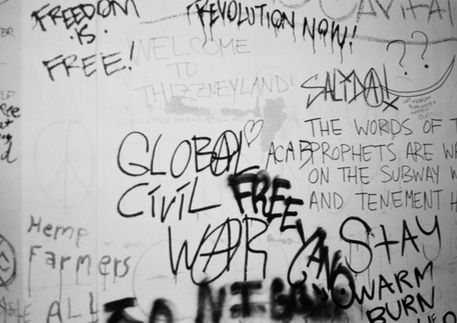Preface to the 2012 Edition
From the 1946 general strike to the Black Panther Party, Oakland has a long and proud history of being a city that does not bow down to authority. Over the past year, Oakland received a barrage of attention from across the country and world as the most radical and militant city in the US. One of the primary contributions the rebels of Oakland handed the Occupy movement was an uncompromising politics stripped of any middle class liberal illusions about the po-lice being on the side of the “99%.” Oakland helped force the whole movement to come to terms with a simple fact The pigs are our enemies and any successful uprising will have to confront them.
A close reading of recent history helps to illuminate the origins of the city’s current wave of antagonistic and anti-police street politics that helped make Occupy Oakland stand out from the crowd. It can all be traced back to the events covered in this publication: the Oscar Grant Rebellions that exploded in January of 2009 and again in the summer of 2010. With the hindsight of today, we can see clearly that those riots were the fiery beginnings of a new era of resistance in this city and beyond. They brought together new affinities that continue to fight side by side today and they exposed the harsh contradictions of the established activist left for all to see. Many of those who participated in the first assemblies which launched Occupy Oakland, a mix of anarchists, Black power organizers and militant rank and file labor, first began to work together and see each other as comrades during the movement that followed the Oscar Grant Rebellions.
 It makes sense then that when these comrades came together to kick off Occupy Oakland on October 10, they renamed the plaza in front of City Hall and at the corner of the city’s main intersection at 14th & Broadway, Oscar Grant Plaza.
It makes sense then that when these comrades came together to kick off Occupy Oakland on October 10, they renamed the plaza in front of City Hall and at the corner of the city’s main intersection at 14th & Broadway, Oscar Grant Plaza.
This was not a solemn decision that emphasized a victimized city in mourning. It was a proud and rebellious declaration that the plaza had now been liberated in the spirit of those who participated in the insurrections of 2009 and 2010. One of the first decisions Occu- py Oakland made was that the police were no longer allowed inside the plaza. And with the exception of the massive militarized raid on the camp during October 25, no uniformed officer was able to cross into the plaza until the camp’s demise at the end of November.
It is this trajectory that begins on January 7, 2009, and leads up through the rise and fall of Occupy all the way until the present that helps us see why Oakland has become what it is today. This publication is an attempt to capture the moods, ideas, conflicts and passions of those early days when we were first finding our footing in this new era. We hope it illuminates the struggles that have shaped our city and possible pathways towards the insurrections to come.
< Revised Edition Production Notes
